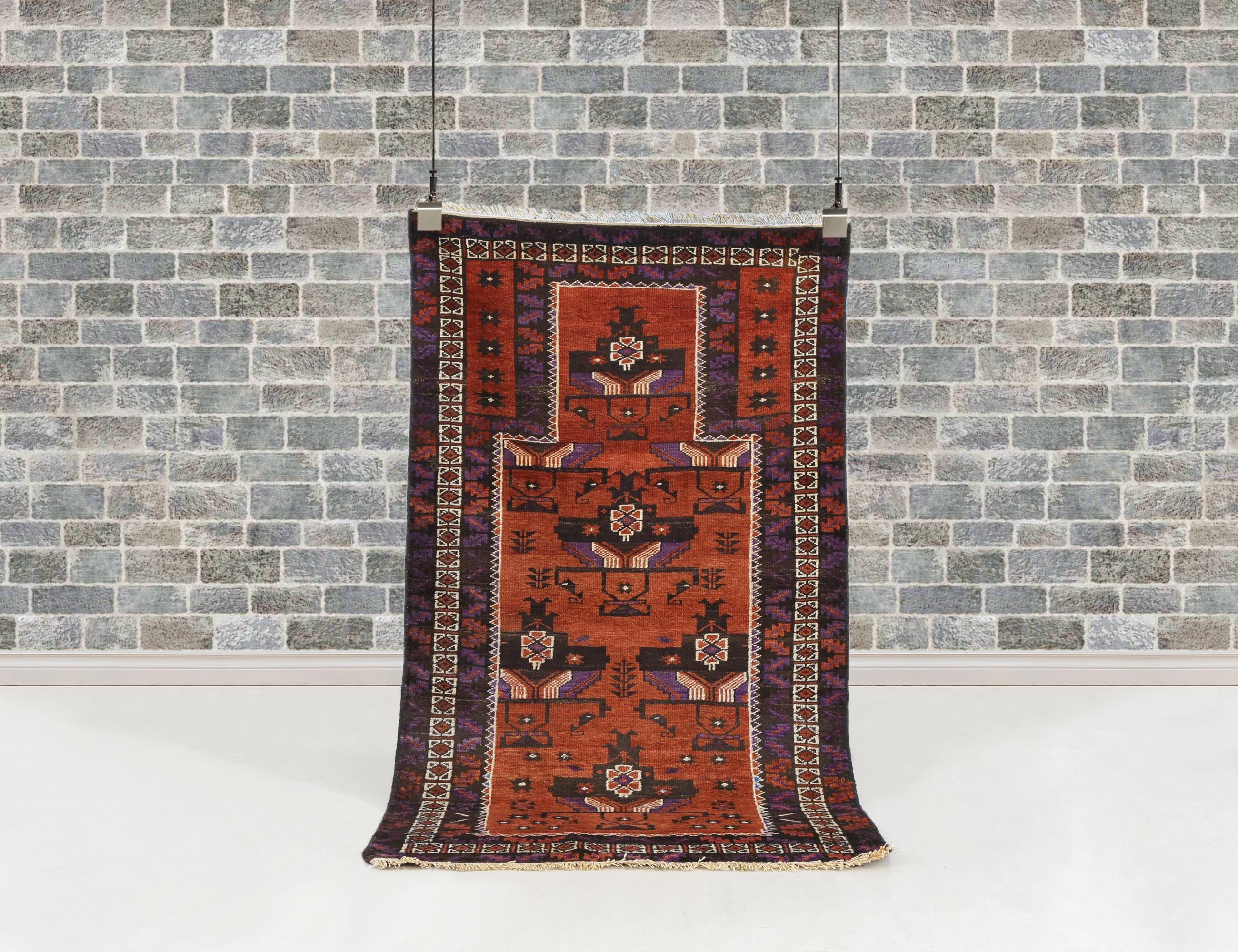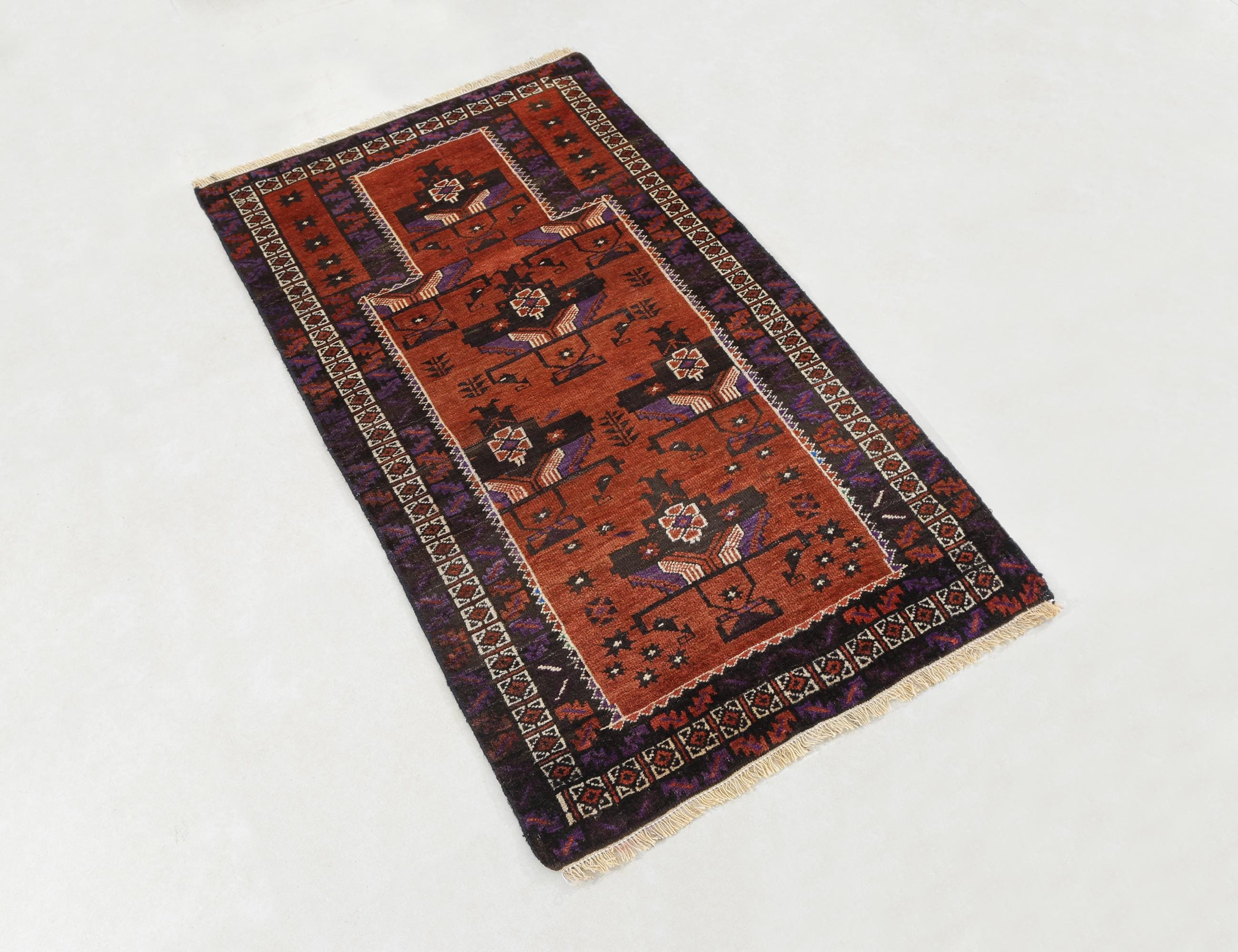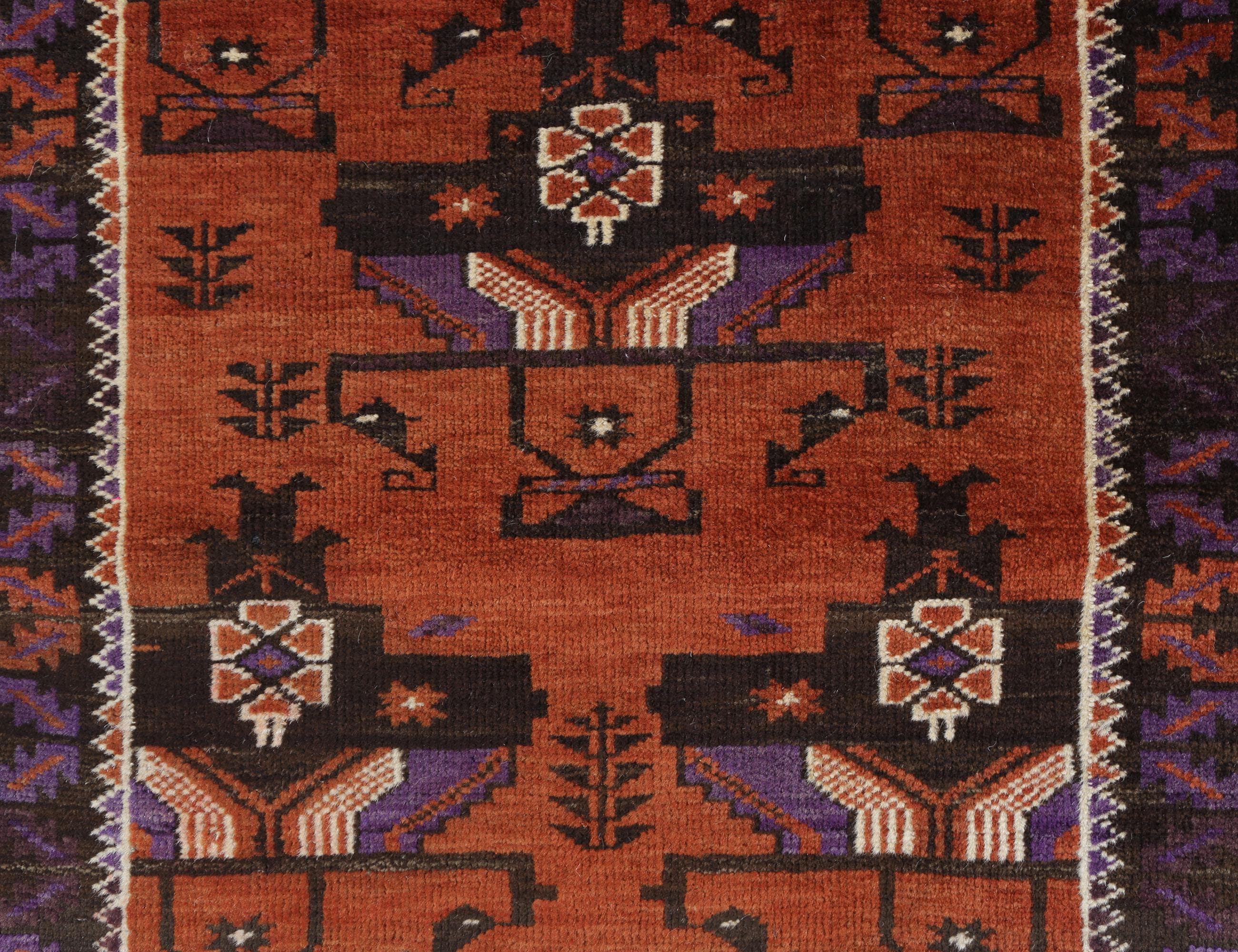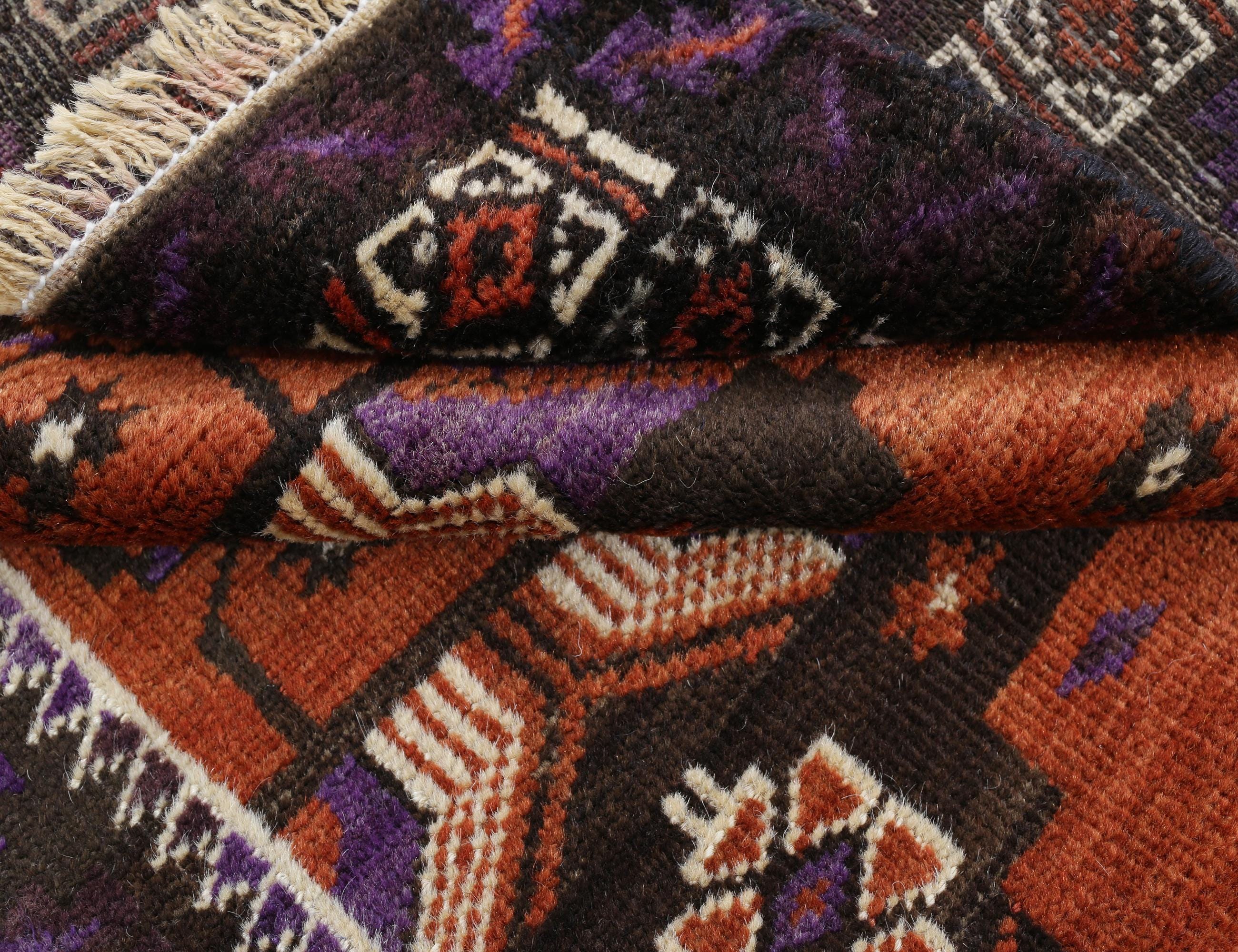








Vintage Baluch Prayer Rug | Hand-Knotted Wool, Tribal Decor (135x81 cm)
$320.00 $800.00
This striking vintage Baluch prayer rug (approximately 135 × 81 cm / 4.4 × 2.6 ft) embodies the symbolic and artistic mastery of nomadic weavers from the Baluch tribal regions of western Afghanistan. Entirely hand-knotted with wool on a wool foundation, this piece reflects the intimate craftsmanship of tribal families whose weaving traditions preserve centuries-old design language.
The rug’s camel-colored field hosts stylized prayer motifs—stepped arches and floral medallions—woven in deep tones of aubergine, walnut brown, and indigo. The inner field presents layered mihrab-inspired motifs stacked in a totemic arrangement, echoing the weaver’s spiritual expression and sense of protection. Each geometric blossom and angular leaf carries cultural significance, representing fertility, faith, and continuity in tribal life.
The rich purple-black border, uncommon in many tribal rugs, frames the field beautifully with reciprocal motifs and cross-forms that ground the visual energy. The entire piece exhibits fine, tight knots, visible abrash from natural dye variations, and a supple handle that attests to its age—likely woven in the 1970s–1980s. This rug’s composition, color harmony, and proportional balance make it not only a decorative element but a piece of living textile heritage.
🧶 Craftsmanship & Materials
Weaving tradition: Baluch tribal weaving, western Afghanistan
Knot type: Turkish (Ghiordes) symmetrical knots
Technique: Hand-knotted, wool-on-wool foundation
Dyes: Natural and early synthetic plant-based dyes (madder, walnut husk, indigo, cochineal traces)
Pile: Medium pile (approx. 7–8 mm), velvety wool with natural sheen
Knot density: ~80–100 KPSI (knots per square inch)
Construction time: 2–3 months on a tribal family loom
Handle: Soft, flexible, and sturdy, ideal for floor or wall use
🌿 Design & Symbolism
Prayer arch (mihrab) structure: Symbolic gateway to spiritual focus, used in devotional weaving traditions.
Totemic stacked motifs: Represent spiritual ascent and protective symbolism against misfortune.
Geometric blossoms & branching stems: Emblems of fertility and the cycle of renewal.
Star and cross motifs in border: Denote unity and protection—believed to safeguard the household.
Color palette: A rich blend of camel, aubergine, purple, ivory, and rust tones achieved through natural dyes and age-acquired patina.
✨ Features
Size: 135 cm × 81 cm (4.4 × 2.6 ft)
Origin: Baluch tribal region, western Afghanistan
Age: Vintage, circa 1970s–1980s
Knot structure: Turkish (symmetrical)
Foundation: Wool warp and weft
Pile height: Medium (7–8 mm)
Knot density: 80–100 KPSI (approx.)
Condition: Excellent vintage — minimal age wear, edges and fringes intact, cleaned and ready for immediate use or display.
Authentic handmade Baluch tribal rug
Rare purple-black border highlighting a camel field
Wool-on-wool construction for softness and durability
Naturally dyed colors with visible abrash (beautiful tonal shifts)
Ideal for boho, rustic, or eclectic interiors
Suitable as a floor rug or wall hanging
🧺 Care Instructions
Vacuum gently with suction only (no rotating brush). Rotate periodically to prevent uneven wear. Clean spills promptly with a damp white cloth. Avoid direct sunlight exposure to maintain dye vibrancy. Professional rug washing recommended every few years for preservation.
🏡 Styling Suggestions
This rug’s warm camel and purple tones make it a perfect accent piece for neutral spaces, pairing effortlessly with wood, stone, or leather interiors. Whether styled at the foot of a bed, beneath a side table, or hung on a wall, it adds depth and storytelling to any home setting.
Each Baluch rug carries the spirit of its weaver—an heirloom born of faith, patience, and artistry. This exceptional example preserves both heritage and beauty, offering collectors and design lovers a meaningful handmade treasure that transcends time.
Shipping from Pakistan
Processing time
5-7 business days
Customs and import taxes
Buyers are responsible for any customs and import taxes that may apply. I'm not responsible for delays due to customs.
Payment Options
Returns & Exchanges
I don't accept returns, exchanges, or cancellations
But please contact me if you have any problems with your order.
